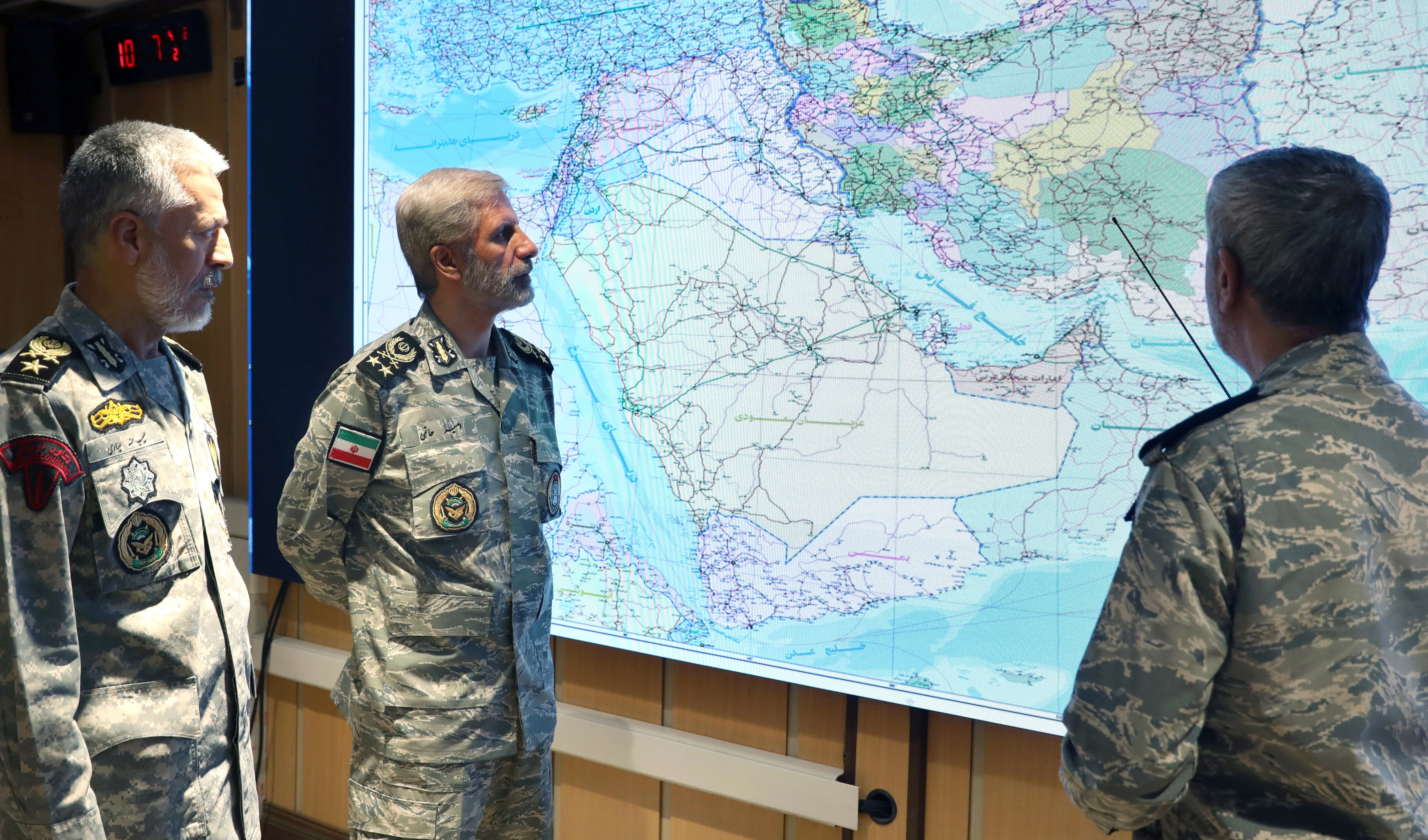Defying sanctions, Iran accelerates missile development post-war
Tehran has boosted its ballistic missile arsenal after the 12-Day War, applying new strategies and overcoming UN sanctions.
-

A domestically-built missile "Khaibar-buster", and banners showing portraits of the Iranian Leader Sayyed Ali Khamenei, center, and martyred armed forces commanders, are displayed in a military exhibition at Baharestan Sq in Tehran, Thursday, September 25, 2025. (AP Photo/Vahid Salemi)
An article by The National Interest highlights Western views regarding Iran’s steadily advancing missile program, which has overcome ongoing UN sanctions on the Islamic Republic. Even as a temporary ceasefire between Iran and "Israel" remains in place, Iran continues to invest heavily in missile production and strategic capability enhancement.
Earlier this month, Iranian Foreign Minister Abbas Araghchi asserted that Iran's current weapons capacity now "far surpasses that of the 12-Day War." He emphasized that "Israel" had failed to meet its objectives during the recent round of hostilities and described the outcome as a defeat for Tel Aviv.
In a similar tone, Iranian Defense Minister Brigadier General Aziz Nasirzadeh noted that Iran's defense sector had progressed significantly in recent months, both in quality and quantity of its missile arsenal.
European intelligence sources cited in October confirmed that Iran has intensified its missile development activities in the aftermath of the 12-Day War
The National Interest notes that shipments of sodium perchlorate, a key ingredient in solid missile propellants, were reportedly transported from China to the port of Bandar Abbas. The material is essential for powering conventional ballistic missiles, making the development particularly noteworthy to international observers.
Strategic lessons and advancements
Iranian military planners also appear to be applying lessons learned during the Israeli aggression. Behnam Ben Taleblu, a senior fellow at the Foundation for Defense of Democracies, told The National Interest that Iran has been adapting its strategies to maximize the effectiveness of its missile strikes.
"The Islamic Republic also learned how to fire less and get more bang for your buck based on the targets and based on the location and based on the firing sequence, or the launch formula, that the regime employed when it fired for some bases that were further east in Iran during the 12-Day War," he explained. "There is no doubt the regime wants to improve the lethality of its missile force. It certainly has learned a lot between Operation True Promise One, True Promise Two, and True Promise Three."
During the conflict, Iran employed a range of advanced ballistic missiles, including the Shahab-3 medium-range system, the Fateh-110 short-range solid-fuel missile, and the longer-range Zulfiqar missile, highlighting its evolving arsenal.
The Sejjil missile, an ultra-heavy, medium-range ballistic missile, was among the arsenal used in the 12th wave of #Iran’s Operation True Promise 3 against “Israel".
— Al Mayadeen English (@MayadeenEnglish) June 18, 2025
This wave also saw the launch of highly explosive, missiles in a two-stage attack.#SejjilMissile… pic.twitter.com/53lRgCxdrS
Continued military demonstrations
Throughout 2025, the Islamic Revolutionary Guard Corps has publicly demonstrated the nation's growing missile capabilities. Military media footage has showcased extensive underground missile bases, underscoring the scale and secrecy of Iran's strategic infrastructure.
Alongside these domestic efforts, Iran continues to arm and support regional allies.
Despite international pressure and sanctions, Tehran’s dedication to expanding its missile program is evident. These developments suggest that Iran is not only preparing for future conflicts but is also solidifying its position as a formidable regional power with an increasingly sophisticated arsenal.

 3 Min Read
3 Min Read










